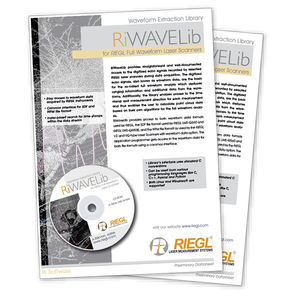
- Software - Simulation
- Software
- Measurement software
- RIEGL LASER MEASUREMENT SYSTEMS GMBH

- Company
- Products
- Catalogs
- News & Trends
- Exhibitions
Measurement software LIS ALS scannerprocessLIDAR
Add to favorites
Compare this product
Characteristics
- Function
- measurement, scanner, process, LIDAR
- Applications
- for aeronautics, laser scanner
- Type
- 3D
- Deployment mode
- cloud
Description
The LIS LiDAR Point Cloud Classification Plugin provides methods to classify airborne LiDAR collections to ground, building, and low/medium/high vegetation.
- Ground Classifier:
The Ground Classifier follows a progressive TIN (Triangulated Irregular Network) densification approach. In a predefined raster, seed points are determined to form an initial TIN. According to the classifier parameters the TIN is then iteratively refined by individual points of the point cloud, until no point matching the insertion criteria is found. All points within a certain distance to the TIN are then labelled as ground. All other points are labelled as unclassified.
- Building and Vegetation Classifier:
Building points are confined to planar surfaces found within the point cloud. Therefore a robust plane fitting algorithm is applied to all unclassified points of the point cloud to detect surfaces of planar objects. Surfaces with similar orientation values are then grouped to objects by region growing methods. Roof installation and points below the roof points within a certain distance can then be relabelled as roof details and facade points.
Vegetation is sliced into three vegetation heights (low, medium, high). Based on a 3D search radius and the point count within this radius, non-vegetation points can be labelled as unclassified.
Main Features
ground classification
building classification
optional refinement for roof installation points and facade points
vegetation classification to low/medium/high vegetation
Main Applications
airborne laser scanning
Catalogs
Other RIEGL LASER MEASUREMENT SYSTEMS GMBH products
Software Packages
*Prices are pre-tax. They exclude delivery charges and customs duties and do not include additional charges for installation or activation options. Prices are indicative only and may vary by country, with changes to the cost of raw materials and exchange rates.







